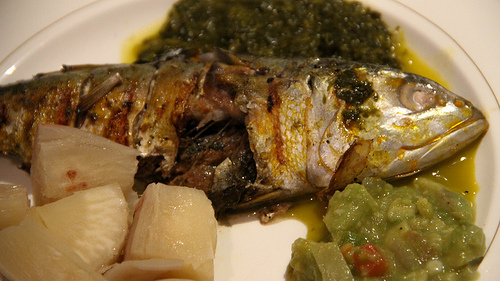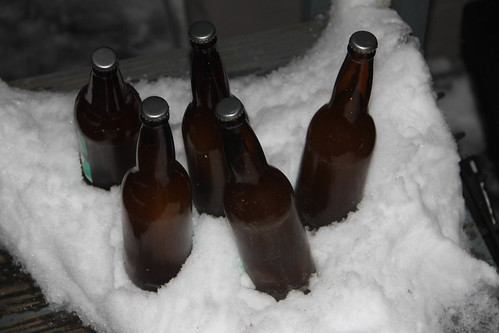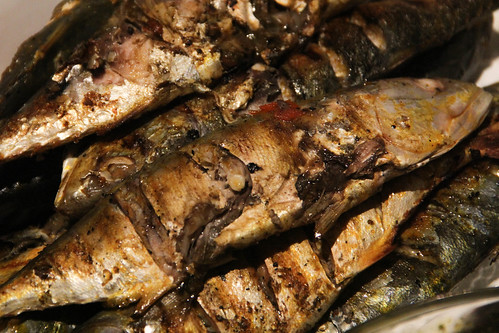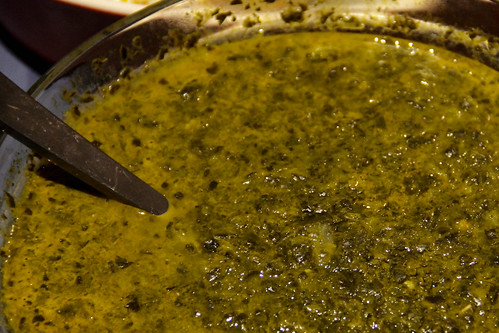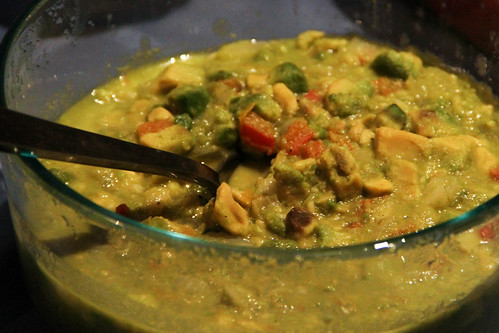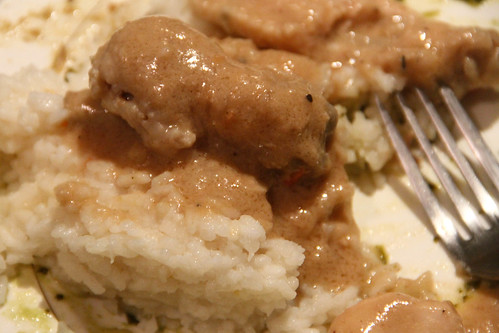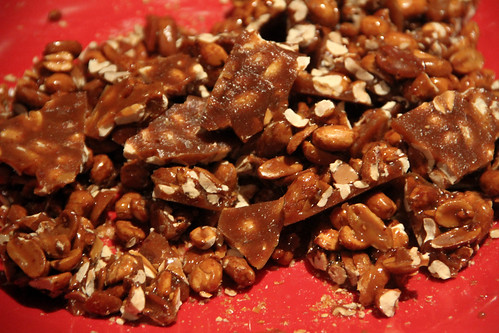
Mali sits squarely in the Sahel, the semi-arid band between the Sahara Desert and the more tropical West African coast. It's the original home of the peanut sauce stew found all over West Africa, while in the north you'll find influences from across the desert.
Our guests were Linda, David, Caitlin, Zoie, Amy, Nicole, David, Stephanie, and friend. Nicole and Stephanie did Peace Corps in Mali, as well as my friend Emily who was a huge help with the menu.
Salade malienne | Green salad with fried plantains and potatoes
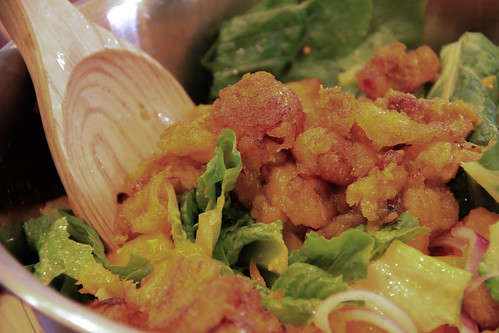
Emily says that a salad in Mali is a basic green salad — lettuce, onion, tomato, etc. — with two notable additions. One is that the dressing is made with a salt-and-MSG-laden Maggi bouillon cube. The other is fried plantain and french fries. I left out the potato part, but did the plantains and Maggi-cube dressing, and wow that was a fun, tasty, and probably not-very-good-for-you salad.
Widjila | Beef stew with dumplings | Recipe

This dish comes from the north of Mali, the area around Timbuktu, abutting the southern edge of the Sahara. This dish clearly has a very strong influence from the other side of the desert, with rich spices like cinnamon, and a slow, gentle braise evoking North African tastes and styles. The yeasted wheat dumpling is curious, as it looks much more like something from Eastern Europe than anything I've found in African cuisine. As you'd expect, this dish was equally tasty and filling.
Mafé poisson | Fish in peanut sauce | Recipe

Peanut sauce is a classic West African preparation, and I chose to make this one with fish to reference the bounty of the Niger River. The sauce recipe is par for the course with what I've cooked from other nearby countries, however by this point I've learned my lesson, and I don't add much water to start — I've waited for an over-thin sauce to cook down too many times! You can always add more water.
We served this with fonio, a grain that's roughly the size and fluffiness of couscous, but with a nutritional value in the ballpark of quinoa. Back when we cooked the Guinea meal I estimated that it might become the next quinoa; since then, The Guardian wrote an article about a chef in New York who's trying to make it happen. It's still tough to find; our friend Anna made the effort to send it to me from a store in Brooklyn.
Dégué fonio | Milky pudding | Recipe
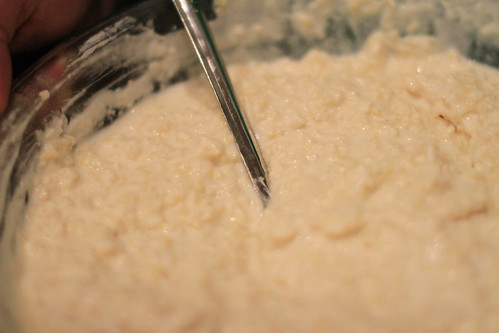
A dessert common to this part of the world involves various sorts of soured dairy mixed with grain. Given that I had fonio on hand, that's what I used. Whether or not you like this dish depends entirely on how much you like your dairy tangy, and whether creamy-mushy is your thing. (It is for me.)
